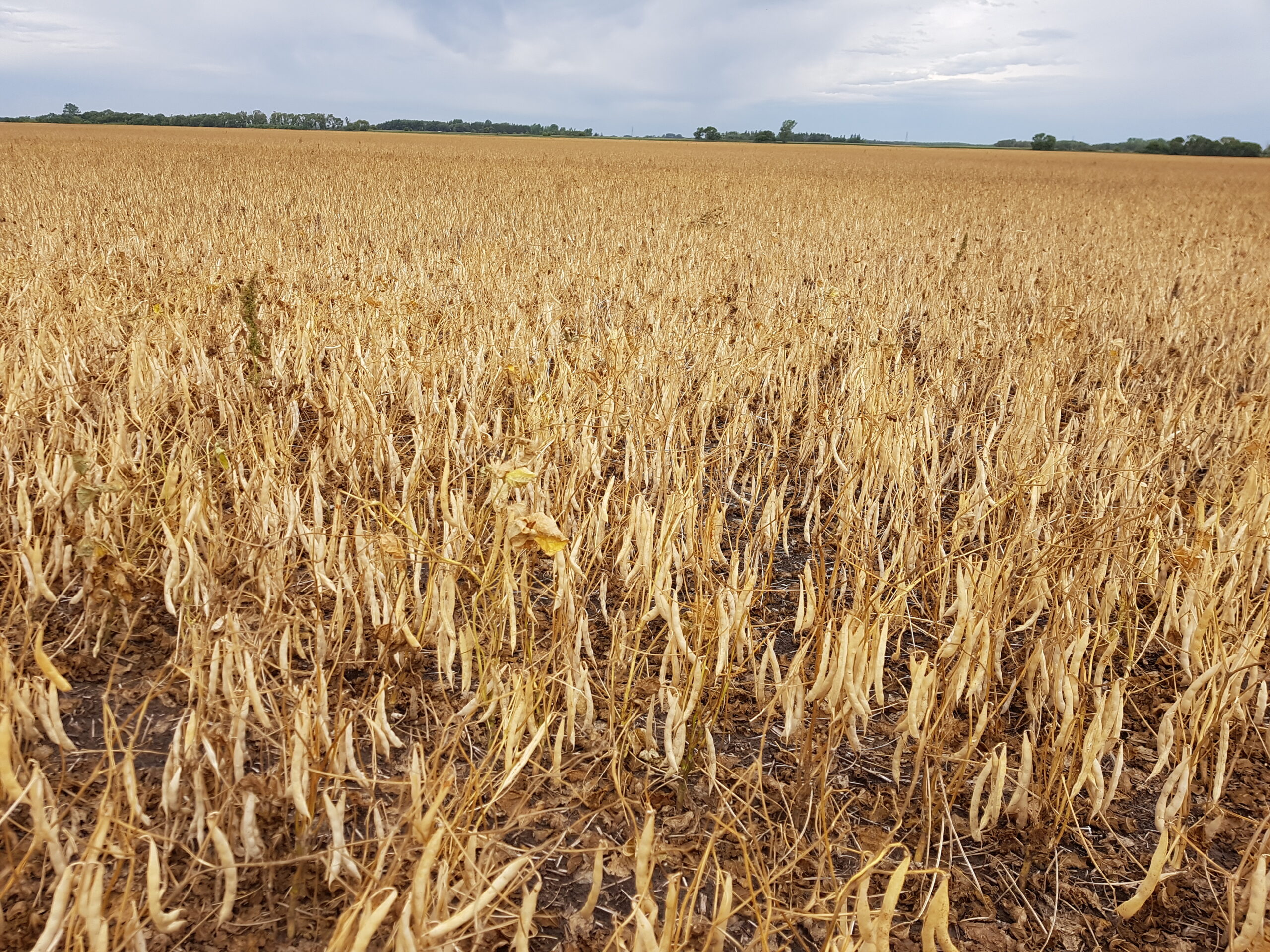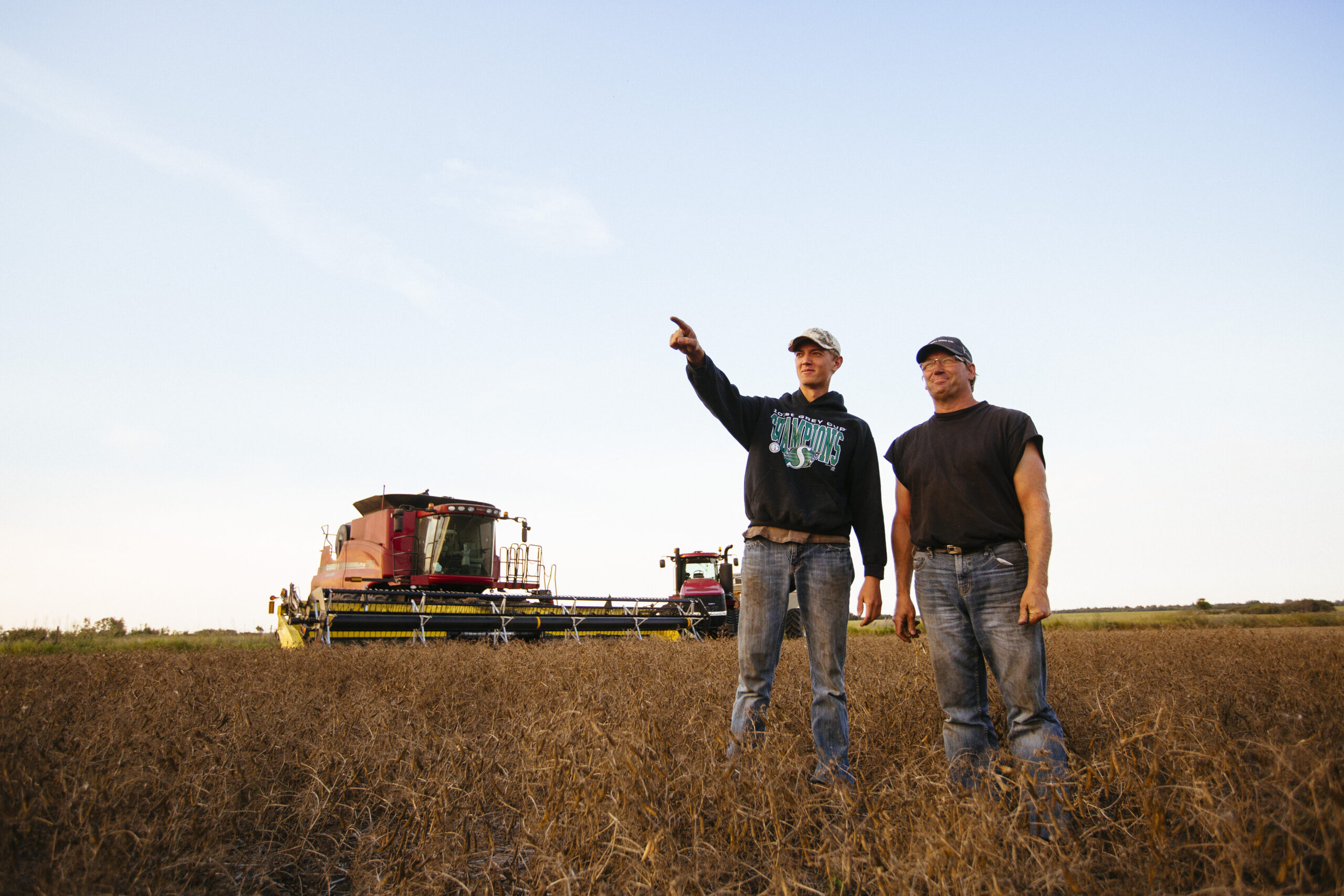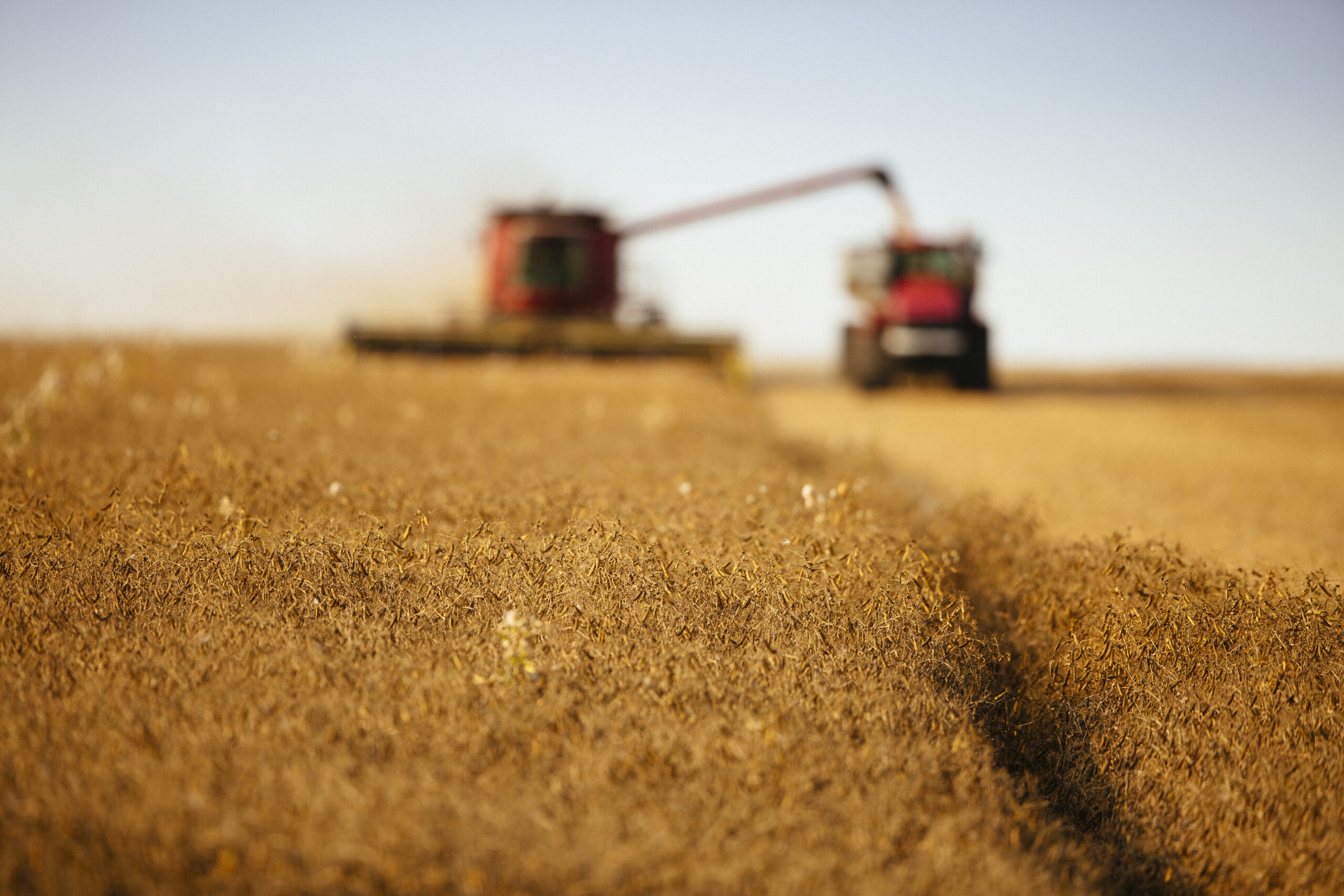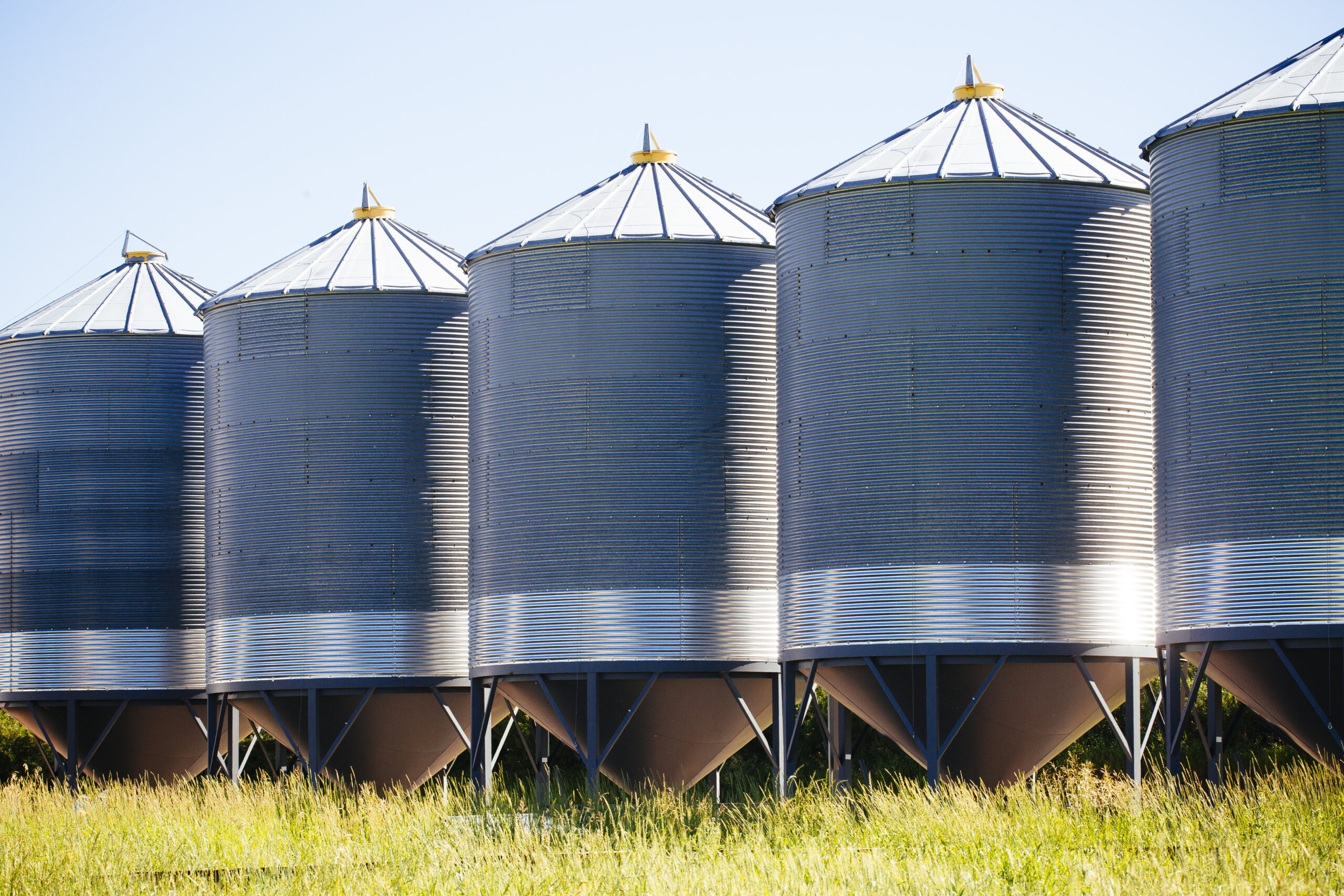Dry bean harvest management must focus on maintaining seed quality for edible markets. Earth-tag (soil stains on seed), general seed stains, cracking of the seed coat, and splits, can result in lower grades. Harvest losses due to pod shatter or inability to access lower pods can result in yield loss of up to 40%. Maximizing quality and minimizing losses are important goals during harvest.
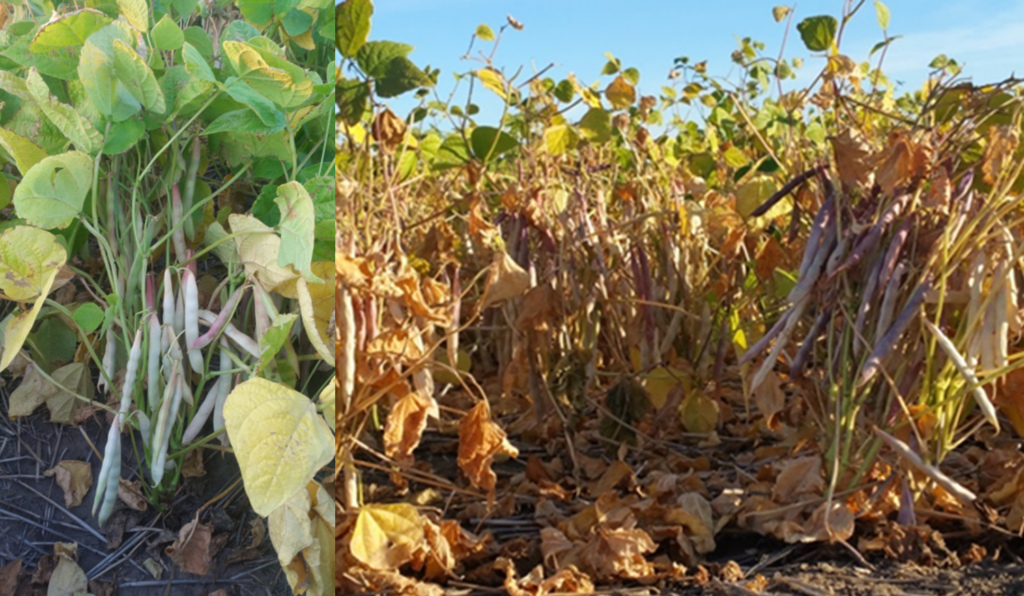
Source: J. Ewen
Staging Dry Beans for Harvest Management
The buckskin stage (Figure 1) is a common term for describing pod colour when beans are close to maturity. At this stage the beans have turned yellow but the pods are still flexible. Even for determinate-type beans, all pods will not be at the same stage when harvesting activities begin. Depending whether beans are pulled (undercut), swathed, or straight combined, the stage of the pods on the bottom, middle, and top of the plant will vary.
Undercutting
Pulling (undercutting) should start when the bottom pods are dry and most of the pods are yellow. Some immature pods will dry down in the row after being cut off if left for several days, but the risk of moisture wetting and moulding beans increases the longer they are laying out. If beans are quite mature, pulling may be done only an hour or two prior to combining to allow soil on the roots to dry. Undercutting equipment must be sized according to row spacing, as equipment designed for 22 inch rows will not work for 36 inch row spacings.
Windrowing rows together to make a swath can occur at the same time with some undercutting equipment, or may be a second operation that is usually done shortly prior to combining, to avoid potential wind damage to large fluffy swaths. Care should be taken to reduce shattering losses when windrowing in some cases. Indeterminate vine-type beans grown in 30 to 36 inch rows are best suited for this process. Watch weather forecasts before undercutting or swathing, as dry bean windrows (swaths) are very compact and lay tight to the ground. If rained upon they can take weeks to dry down, especially with short, cool fall days.
Swathing
Beans grown in solid seeded systems are often swathed prior to combining. Swathing occurs at a similar stage to pulling, when 50-70% of the pods are in the buckskin stage. Most of the leaves will have dropped off the plant at this stage. A few leaves left on the plant will help limit shatter losses, but green material may gum up on the knife and require cleaning. Vine lifters and pickup reels can be beneficial to reduce losses by helping to get lower pods. As with pulling, swaths are susceptible to both wind damage and rotting if swaths get quite wet from rain.
Straight Cutting
Dry beans may also be straight cut when 75%of the pods are dry and the remaining pods are in the buckskin stage. It is recommended to use a harvest aid if enough weeds are present, or a desiccant to allow for quick plant dry down so the seed does not overdry while waiting on leaves and stems to dry down. Use of vine lifters or flex headers to maximize ability to capture low pods can be helpful. Straight combining works best if the crop is even and free of green weedy material.
Desiccation
The crop is ready for desiccation at 80% pod colour change and 80-90% leaf drop, when the seeds are less than 30% moisture. Glyphosate is not a desiccant and is intended for weed control prior to harvest only.
Consult your buyer and keepingitclean.ca prior to selecting a product to avoid potential market risks.
Combining

Combining dry beans can be done with either special bean combines or rotary/conventional combines. The bottom of the special bean combines are a large screen and beans are moved around on conveyors to let dirt fall out. The specialized combines also dump the grain (Figure 2) instead of using an unloading auger. They are excellent for reducing damage to beans harvested in hot, dry conditions, especially when growing high-value coloured beans.
In general, rotary combines are gentler on beans than conventional combines, especially if you can keep the rotor full to help cushion the beans. Cylinder speeds should be set as low as possible and adjusted during the day as beans dry. Concave spacing should also be increased during the day as beans dry down. Conventional combines can be modified to be gentler on beans and allow more dirt to fall through earlier in the process to reduce earth-tag if a grower wants to have a combine for exclusive use on beans.
Harvest Moisture
Dry beans are often traded at 17% moisture but are considered dry at 16% moisture. Combining dry beans can begin when seed moisture is between 18-22%. Combining below 14% greatly increases the risk of cracking. Moisture will fluctuate throughout the day and should be monitored as harvesting progresses. If moisture drops too low and cracking becomes an issue, waiting until moisture increases in the evening or early morning may be necessary.
Handling Dry Beans
Dry beans should be handled as little as possible and as gently as possible at and after harvest. The seed coat is susceptible to mechanical damage and even hairline cracks can result in beans that are less desirable in the markets. Use conveyors and bin ladders where possible. Market grade determinates are based on the presence of damaged or heated seeds, foreign material, disease, seed uniformity, and the presence of off-type beans. Grading is done by the Canadian Grade Commission.

Source: J. Ewen
